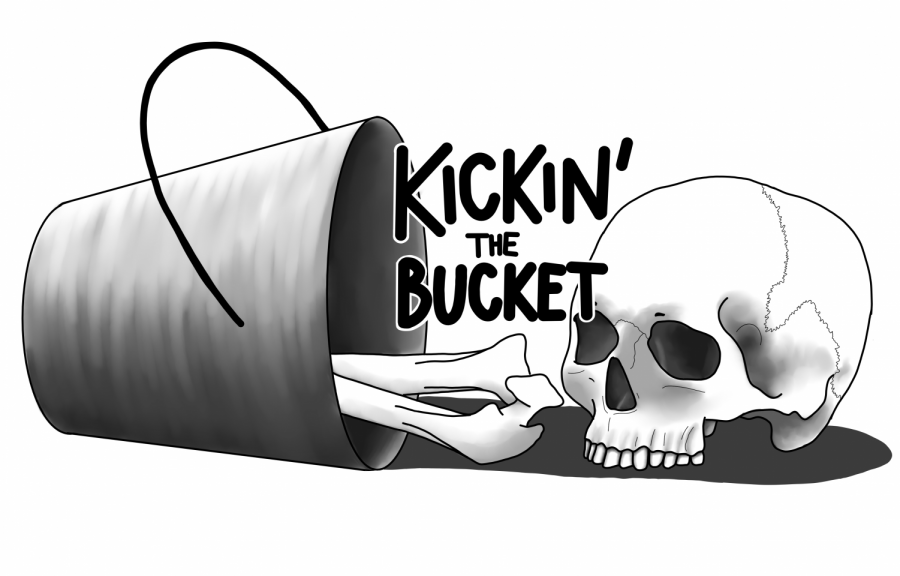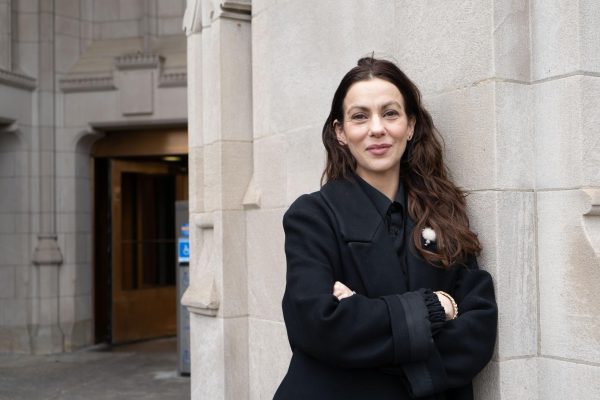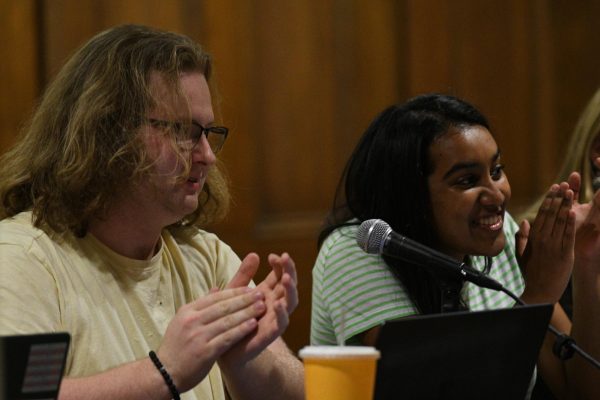Kickin’ the Bucket | Back to basics: Decomposition
Kickin’ The Bucket is a bi-weekly blog about death, dead things and the people who work with them.
January 13, 2022
In honor of the new semester and syllabus week, we’re going to start with the basics — what happens to the body after death.
Decomposition begins only a few minutes after death, when cells become deprived of oxygen and start digesting themselves with their own enzymes — a process called autolysis. As cells, tissue and organs break down, blood cells leak from damaged vessels and settle in small vessels, making the body appear pale. Body temperature also begins to drop about 1.5 degrees Fahrenheit per hour, which can help forensic pathologists determine time of death, if necessary.
At hour one, all of the body’s muscles relax — called primary flaccidity — causing pupils to dilate, eyelids to hang and the body to go limp. The bowels and bladder also release as sphincter muscles relax. Imagine how many tearful movie death scenes would be ruined — or made more realistic — if a character released their bowels while being held in the lap of their mourning partner.
At hours two through six, blood settles at the bottom of the body, called livor mortis. Rigor mortis — the stiffening of muscles — sets in soon after. It starts at the eyelids, jaw and neck muscles before working its way down the body.
Due to a downed immune system, microbes from the gastrointestinal tract go unchecked and begin to digest the intestines and surrounding tissues before spreading to the lymph nodes and other parts of the body.
Next, putrefaction increases, where soft tissue is broken down even further into gas, liquids and salts. The build-up of gas and liquids can cause the abdomen to bloat, which causes blisters to form on the skin, leading large sheets of skin to loosely hang from the rest of the body, called slippage. The body will also begin to smell as it begins to purge the gas and fluids.
The putrid smell of decay attracts flies to the body, where they lay their eggs and feed. The eggs hatch within 24 hours of being laid, and the new maggots feed off the body until they are ready to pupate and develop into adult flies. This cycle repeats until the flies have no more resources. Based on how many insects and what stage in their life cycle they are at, forensic entomologists can determine an estimated time of death.
Decomposition is actually very beneficial to an ecosystem, as it attracts other bugs and animals to feed on the flies, maggots or larvae. Other scavengers or meat-eating animals may feed directly off the body. Additionally, purging releases rich nutrients into the soil that promote diverse plant and animal life.
Of course, the rate of decomposition varies based on environmental conditions — cold temperatures slow decomposition and dry conditions can even mummify a body. Bodies located in a living room will decay differently than one located in a forest or in a coffin after embalming.
My one piece of advice — and a forensic pathologist told me this — is to always check in on your loved ones who live alone. There are many instances where people report a foul smell or a strange liquid dripping from the ceiling and find a neighbor who died days before.
Just give Grandma a quick call.








